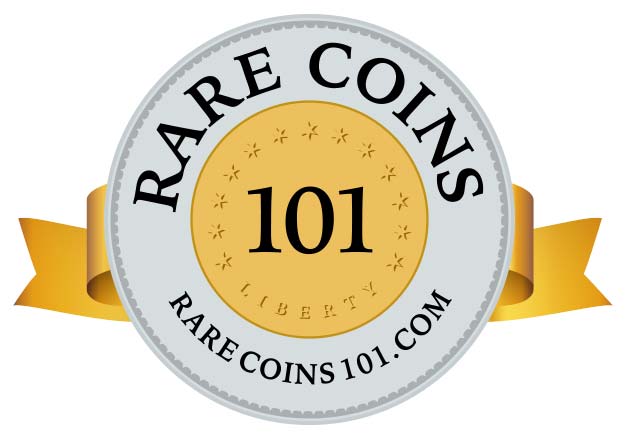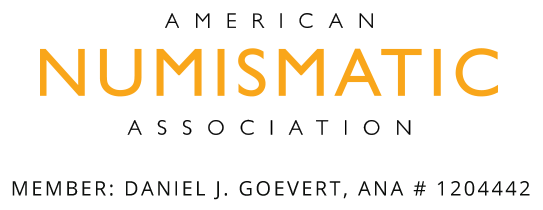1922-D Lincoln Cent, Missing D
All Lincoln cents coined in 1922 came only from the Denver Mint, where more than 7.1 million pieces were struck. A very small percentage of them are what collectors describe as "Plain", that is, they're missing the "D" mintmark. A few of the 1922-D cents are also characterized by a barely visible, “Weak D” mintmark.(1)
Researchers have identified three die varieties, or die pairs, responsible for the missing mintmark effect. The most important of the trio is “Die Pair 2,” considered by numismatists to be the only true “No D” variety, and carries the most clout in the marketplace.(2)
Regarding Die Pair 2, the current theory is that a pair of working dies, well into its production run making normal 1922-D cents, suffered a clashing event (i.e., the coin press activated without a planchet in place, causing the dies to hit one another, resulting in damage to the dies).(3)
The reverse die was destroyed and replaced with a new die. The obverse die, though already considerably worn, was deemed serviceable. The die was reworked and polished to remove the clash marks, but in the process, the D mintmark was erased. These dies were then coupled to form Die Pair 2, and the resulting coins bore no mintmark whatsoever.
Die Pair 1 and Die Pair 3 may have evolved as a result of die deterioration and die filling. This theory suggests the obverses of these die pairs accumulated foreign matter (lubricants, dirt, metal filings, or any combination thereof) in the recess of the mintmark. Thus, the mintmark could not form because the gunk occupying the recess prevented metal flow.
With additional strikings, the gunk compressed and the same dies produced the “Weak D” effect. This process repeatedly played out, alternatively producing “No D” and “Weak D” cents.
It is not difficult to distinguish Die Pair 2 examples from those of Die Pairs 1 and 3. On Die Pair 2, the reverse is by far the sharpest, the second 2 in the date is bolder than the first 2, and the obverse, although worn, is the strongest of the three.
Ironically, had cents been produced at the Philadelphia Mint in 1922, the "No D" rarity would probably have never been recognized. Upon hitting circulation, Denver cents missing the D would have been assumed to have originated in Philly.(4)
When shopping for the 1922 “Plain” Lincoln cent, remember it is the Die Pair 2 “Strong Reverse” favored most by collectors. However, the “Weak D” and “Weak Reverse” of Die Pairs 1 and 3 do carry some value and deserve to be placed in protective holders.
Be careful when buying a 1922-D "No D". As should surprise no one, many so called "no D" cents have been passed on to unsuspecting collectors that are regular 1922-D cents altered to remove the D. That's why it's better to obtain examples of this rarity certified by PCGS, CAC, or NGC.
Like other key dates of the venerable Lincoln cent series, the 1922 “No D” has stumbled in value over the last few years, in accordance with its long history of cyclical movements. Expect to see steeper trendlines in the not-so-distant future.
| Estimated survivors in all grades: 15,070 ?
The survivor estimate from PCGS represents an average of one or more experts' opinions as to how many examples survive of a particular coin in all grades. Survival estimates include coins that are raw, certified by PCGS, and certified by other grading services. Learn more at PCGS. |
| PCGS Rarity Scale: 2.8 ?
The 'PCGS CoinFacts Rarity Scale' assesses the relative rarity of all U.S. coins, based on estimated surviving examples. The scale runs from 1.0 to 10.0. The higher the number, the rarer the coin.
Learn more at PCGS. |
| Search for the 1922-D Lincoln Cent, Missing D on eBay** |
Preview of eBay selection:
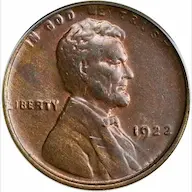 |
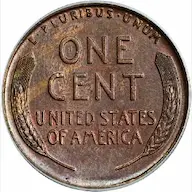 |
| Trendline Avg = 5.30 | CLASSIC RARITY |
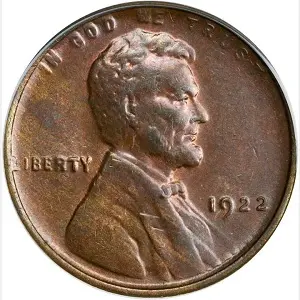 |
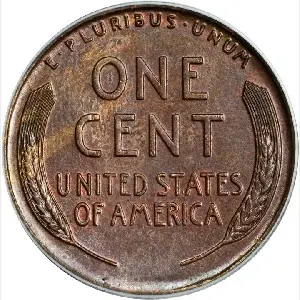 |
| Trendline Avg = 5.30 | CLASSIC RARITY |
Historic Value Trend Charts:
| Last updated 11-9-25 | Return to Key Date Coin List | |
| Compare to Common Date Coin of Same Type | ||
|
|
||
| Download Charts to Your Computer | ||
Sources
1. Stack's Bowers Galleries. 1922 No D Lincoln Cent. Die Pair II. Strong Reverse. Mar 2012 Auction.
2. Stack's Bowers Galleries. 1922 No D Lincoln Cent. Die Pair II. Strong Reverse. Mar 2018 Auction.
3. ANA Certification Service. 1922 "No D" Cent Die Study. The Numismatist Magazine. American Numismatic Association, July 1982.
4. Heritage Auctions. 1922 No D 1C Strong Reverse. May 2008 Auction.
**Many very fine coin dealers sell on eBay. At any point in time, there may be over one million search results for United States coins. This includes quite a few of the recommendations on our Key Date Coin List.
If you’re thinking about purchasing a rare coin, eBay is certainly worth a look. For your convenience, the links from this site to eBay are coded to bring up only coins certified by PCGS and NGC.
As is always, always the case, never buy a valuable coin from a seller whose trustworthiness cannot be verified. Learn more about this at our chapter Best Places to Buy Coins, which also has a section on doing business on eBay.
In the interest of full disclosure, Rare Coins 101 receives a small commission anytime someone connects to eBay from this site and purchases something.
Coin images by Stack's Bowers Galleries.

